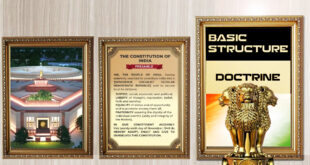India barely found the inclination to celebrate its independence from Britain on August 15, 1947. Communal riots and a massive influx of refugees following Partition threatened to fragment the fledgling country. Broke and traumatised, it had nothing like the Marshall Plan to cope with the challenges it faced, despite significantly contributing to the Allied victory in the Second World War.It was in such bleak conditions that India took up the task of convincing the heads of hundreds of princely states to accede to it. That it succeeded in doing so in less than two years after Independence was no miracle. The ‘integration project’ was the personal achievement of two remarkable men — Sardar Vallabhbhai Patel, the first Home Minister and Deputy-Prime Minister in Jawaharlal Nehru’s Cabinet; and his efficient confidant V.P. Menon.Together, they persuaded the rulers of one princely state after another — nearly 600 in all — to sign the Instruments of Accession to the Indian state. It helped that India, as the successor state to British India, maintained a tenuous control over the princely states to, as Menon explained, “protect their territories against external aggression and to preserve peace and order throughout the country.” India’s successful integration holds significant lessons for the rest of the world, especially to the countries of Europe and their fitful efforts at coming together. It took the nations of Western Europe thirteen years following the Second World War to start on their process of integration. This led to the establishment of the European Economic Community in 1958, and later, the European Union (EU) in 1993. However, the EU remains a tentative and inconclusive experiment, with one of its largest members — the United Kingdom — about to exit it. A European political union, which looked very possible a decade back, is not being discussed even as a possibility today. Contrast this with India, which achieved both an economic and a political union within a few years of gaining freedom, giving its people what Winston Churchill expected Europeans to achieve but so far have not — “a sense of enlarged patriotism and common citizenship.”Integrating a land and a people of immense diversities to form one country was no mean task. That this was achieved without the mass murders, show trials and executions which accompanied the rise of the Soviet Union and China makes the story of India’s coming together quite the grandest one of the 20th century. The 72nd anniversary of our Independence also marks the time when the integration of Indian states commenced in earnest. It is a fine time for us to reflect on this achievement and savour the moment.
Source : https://www.thehindu.com/todays-paper/tp-opinion/the-story-of-indias-integration/article29097747.ece
 Chinmaya IAS Academy – Current Affairs Chinmaya IAS Academy – Current Affairs
Chinmaya IAS Academy – Current Affairs Chinmaya IAS Academy – Current Affairs



